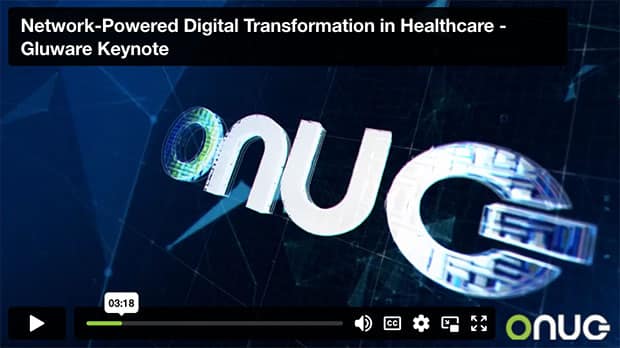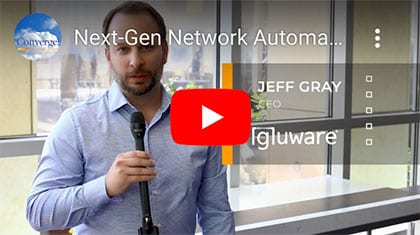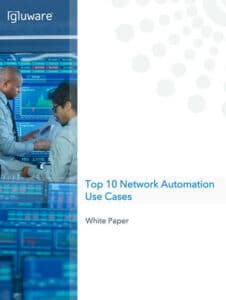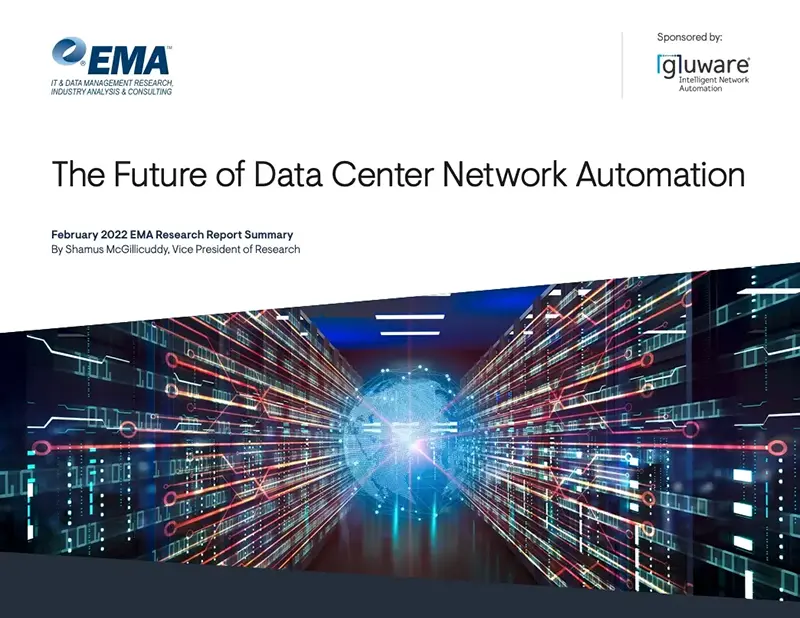Why Network Automation
Modernize Using Gluware's Intelligent Network Automation
Smarter. Faster. Simpler.
As large, modern networks increase in complexity, the corresponding maintenance and management of those networks means organizations must shift to network automation on a large scale. Insightful, intent-based software is critical to ensure that automating complex networks is accomplished with security, agility and care.
As your organization starts the journey toward software-driven network management—from solutions for basic network discovery and compliance to error-free policy management—Gluware is there every step of the way to help you:
- Rapidly onboard your configs
- Implement multi-vendor networking
- Leverage your existing CLIs
- Automate existing brownfield devices
- Supplement/supplant home-grown scripts
- Eliminate manual errors
- Minimize downtime
- Implement and enforce policy standards
- Get zero-touch provisioning
- Inventory and discover multi-vendor network devices
- Monitor and detect any configuration drift
- Accelerate network audits
- Notifies and provideUpgrade and patch OS at scales line-by-line comparisons if drift/changes are detected
- Define and enforce network-wide configuration policy
- Reduce task time from months to minutes
- Eliminate legacy tools including NCCM costs
Put Intelligent Network Automation to work for you.
- Eliminate manual errors—automate rollouts
- Implement and enforce policy standards
- Zero-touch provisioning
- Centrally manage all multi-vendor devices
- Accelerate audits
- Identify network changes
- Patch multi-vendor devices at scale
- Constant hi-res error checking and auto-remediation
- Continuous delivery (Intent-Based/APIs)
- Safe and predictable (model-driven)
- Minimize downtime
- Eliminate legacy NCCM costs
Network Automation Applications
Discovery
Device Manager
OS Management
OS Manager
Change Detection
Config Drift & Audit
Policy Creation
Config Modeling
API Integration
GluAPI
Gluware's Modern Intent-Based Approach
Getting Started With Gluware
-
Create Users and Organizations (Multi-Tenant)
Use Systems Settings for enterprise-grade user and workspace setup of projects including customizable, role-based-access control (RBAC), integrated LDAP and RADIUS support for interacting with existing infrastructure for fast and secure new user sign-on.
-
Customize Organizations with Features and Tools
Customize Orgs and Sub Orgs with the specific tools and feature sets needed for each project or phase.
-
Configure Features
Use the Model Editor and guided workflows with the Config Modeling app for existing networks to customize and configure the different features to your network.
-
Onboard Network Devices
Device Manager leverages the platform vendor extensions to dynamically discover and interrogate device details to provide a realtime network inventory.
-
Preview / Provision / Sync Nodes
Before pushing changes to the network, the Provisioning Preview shows the user exactly what CLI will get generated to configure each node to the desired state. The provisioning engine provides detailed logs along with a CLI view to see exactly how Gluware interacts with the device. When provisioning, Gluware ensures each of the features managed is synchronized to the desired state along with validation to ensure the change is successful.
-
Audit, Track and Configure Changes
Using the Config Drift & Audit app, continually monitor the network to identify exactly what has changed. Use the Audit capability to check for compliance to internal, security and 3rd-party standards. Get notified about exactly which devices are out of policy. For all device configs, remediate with manual or scheduled provisioning to return them to the desired Config state.






